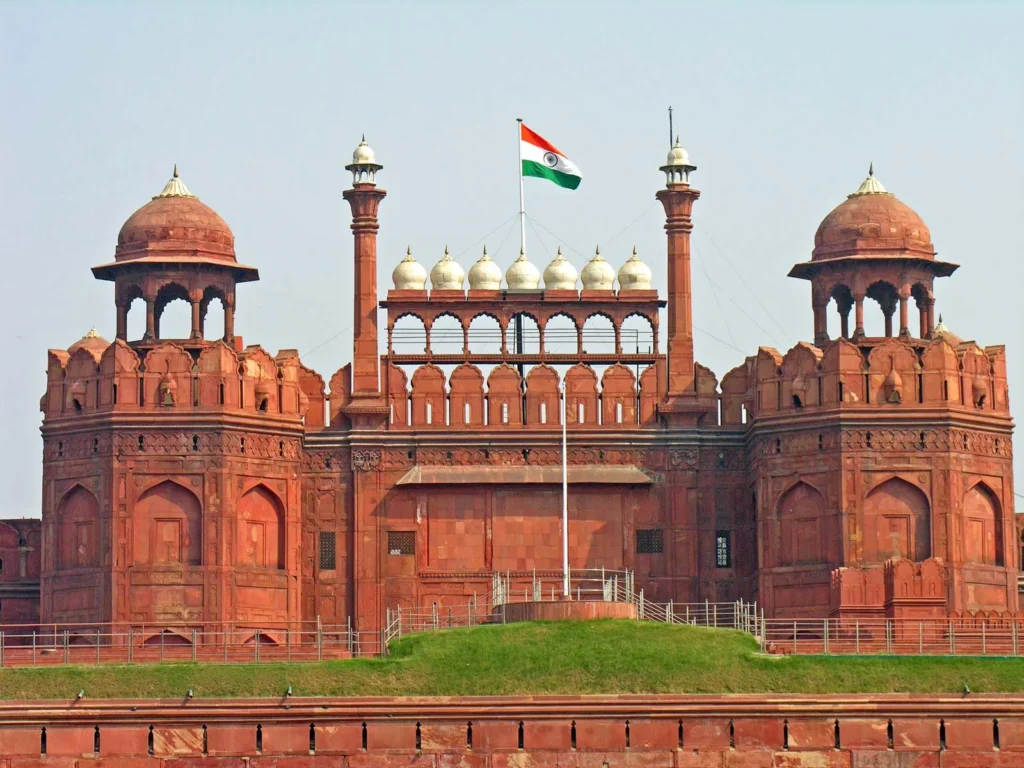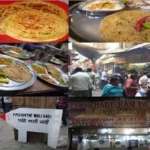Standing tall in the heart of Old Delhi, the Red Fort (Lal Qila) is more than just a monument—it’s a living chapter of India’s history. Built with massive red sandstone walls that glow warmly in the sun, it has witnessed emperors, revolutions, and the birth of a nation. Every year on Independence Day, the Prime Minister hoists the national flag from its ramparts, reminding us of its deep connection to freedom. But beyond its symbolic importance, the Red Fort is an architectural masterpiece that blends Mughal grandeur with a story that still inspires.
The Legacy of the Red Fort
Commissioned by Emperor Shah Jahan in 1638, the Red Fort took almost a decade to complete. Designed by architect Ustad Ahmad Lahauri (also credited with the Taj Mahal), it became the heart of Shahjahanabad—the new Mughal capital.
- Purpose: It served as the political and ceremonial center of the Mughal Empire.
- Name Origin: The fort’s name comes from its massive red sandstone walls, stretching over 2 km.
Architectural Grandeur
The Red Fort is a blend of Persian, Timurid, and Indian architectural influences, reflecting the cultural fusion of the Mughal era. Key highlights include:
🏯 Lahori Gate & Delhi Gate
These grand entrances symbolize Mughal authority and welcome visitors into its vast courtyards.
🌸 Diwan-i-Aam (Hall of Public Audience)
Here, the emperor addressed the grievances of his subjects—an open court that symbolized royal justice.
💎 Diwan-i-Khas (Hall of Private Audience)
Famed for the Takht-e-Taus (Peacock Throne), where the emperor met nobles and foreign dignitaries. The famous inscription here reads: “If there is a paradise on earth, it is this, it is this, it is this.”
🌺 Rang Mahal (Palace of Colours)
A luxurious palace with painted ceilings, ornate mirrors, and flowing water channels for cooling.
The Red Fort Through History
- Mughal Era: The fort remained the royal residence for about 200 years.
- British Period: After the Revolt of 1857, the British plundered its treasures and used it as a military garrison.
- Post-Independence: On 15th August 1947, Pandit Jawaharlal Nehru unfurled the tricolour here, marking India’s freedom.
Cultural & Symbolic Importance
The Red Fort is not just a heritage site—it’s a symbol of resilience. Today, it hosts the grand Independence Day celebrations and the Sound & Light Show, which narrates the fort’s history under the stars.
Visiting the Red Fort – What to Expect
| Feature | Details |
|---|---|
| Location | Netaji Subhash Marg, Old Delhi |
| Entry Fee | ₹35 (Indians), ₹500 (Foreigners) |
| Timings | 9:30 AM – 4:30 PM (Closed on Mondays) |
| Best Time to Visit | October – March |
| Nearby Attractions | Jama Masjid, Chandni Chowk, Raj Ghat |
Tips for a Memorable Visit
- Arrive early to avoid crowds and harsh sunlight.
- Take a guided tour to fully understand its rich history.
- Don’t miss the museum complex inside the fort.
- Explore nearby Chandni Chowk for local food and shopping.
SEO Meta Elements
Meta Title: Red Fort – History, Architecture & Travel Guide to Delhi’s Iconic Monument
Meta Description: Discover the Red Fort’s history, architecture, and visitor tips. Explore Delhi’s iconic heritage site and symbol of India’s independence.
Conclusion & Call-to-Action
The Red Fort is more than a UNESCO World Heritage Site—it’s a living reminder of India’s journey through time. Whether you visit for its majestic architecture, its historical significance, or the vibrant atmosphere of Old Delhi, the Red Fort will leave you in awe.
Have you visited the Red Fort yet? Share your experience in the comments or plan your trip today to step into the pages of history.
Nearest Metro: Chandni Chowk (Yellow Line)
Nearest Bus Stand: Red Fort Bus Stop



